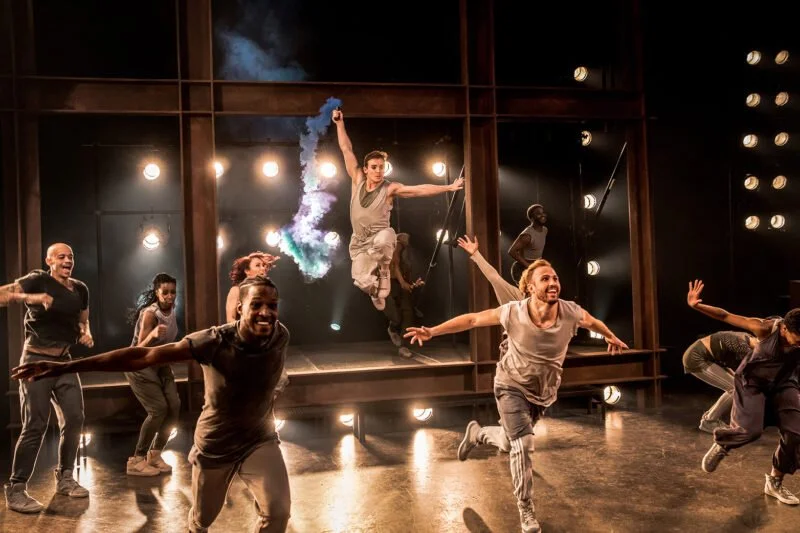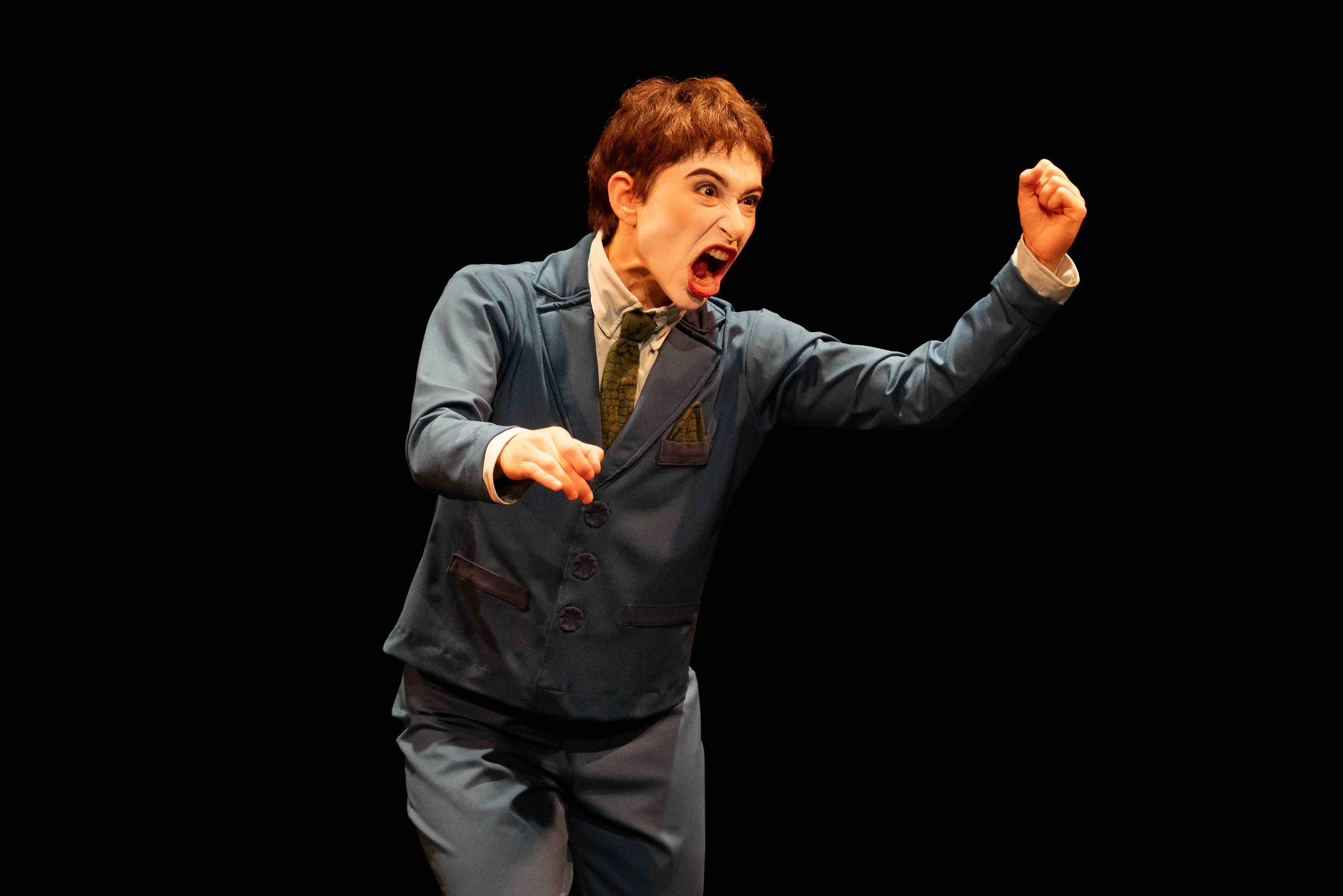Theatre review: Jesus Christ Superstar revival puts focus on music over storytelling
Some energetic numbers and visually impressive design can’t make up for a show that feels rushed and compressed
Broadway Across Canada presents Jesus Christ Superstar at the Queen Elizabeth Theatre to November 20
JESUS CHRIST SUPERSTAR, the rock opera that launched Andrew Lloyd Webber and Tim Rice to Broadway, West End, and film success in the 1970s, is iconic for its departure from realism—injecting contemporary music and cultural influences into an obvious period piece. One could even argue that it paved the way for the likes of Hamilton. The current Broadway Across Canada production is the show's 50th anniversary tour, a version of the 2016 Regent's Park Open Air Theatre production in London, directed by Timothy Sheader. The Regent Park production opened to much acclaim, winning an Olivier Award for Best Musical Revival. However, it seems much of the show's lustre and impact has been lost in translation as it filtered its way to Vancouver on tour.
Originally performed as a two-act musical, this production is tightened up into 90 minutes with no intermission. In outdoor concert versions of musicals, it makes sense to compress things and downscale character interactions. Lead performers hold microphones and the focus is more on the music, rather than telling a full story. This hasn't translated well to the current tour, as in a standard theatre setting this show feels rushed, devoid of emotion, and thin on storytelling.
The musical starts off promisingly with the Overture, which is traditionally presented as an opening sequence where hippies converge to put on a “show” depicting the final days of Jesus’ life. In this rendition, we see a present-day version of hippies, in hoodies and oversized, loose clothing run onstage from the house. There’s a good amount of excitement that builds, including when the ensemble separates to reveal this production’s Jesus (Jack Hopewell).
However, that’s when things fall flat. As Judas, Elvie Ellis’s vocals in “Heaven on their Minds” is adequate, but lacks the desperation needed for Judas’ frustrations to make sense and foreshadow the fateful events to come. And while there’s great energy from the ensemble in the following number, “What’s the Buzz”, Drew McOnie’s uniform choreography for the ensemble and downscaled character interactions as mentioned earlier, provide few opportunities for characterization.
The onstage action seems oblivious to the lyrics being sung. The ensemble is so busy with McOnie’s choreography, there’s no time for anything else. So, when Jesus expresses his irritation towards his followers for not understanding his cause, it comes across as sudden and unmotivated. In delivering his lines, Hopewell lacks emotion, which doesn’t improve matters.
And that’s how 75 percent of the show goes. Hopewell often seems indifferent to what’s going on. Needless to say, Ellis has nothing to play his anger off of. I imagine that in the outdoor concert version, audiences were cheering more and the overall vibe was more exciting, making the experience more complete. But that's not the case here, so it feels like this production is in a hurry to get the show over with. The only moments that stir emotion and thought are when Caiaphas (Isaac Ryckeghem) and his group of priests—the show’s villains—appear atop set designer Tom Scutt’s cross-shaped catwalk. In slinky black cloaks and holding menacing scepters, this group’s performance is led by Kodiak Thompson’s strikingly menacing portrayal of Annas.
One of the most bizarre moments of the show is The Temple number. With the ensemble dressed in black leather crop tops and red pants, some of them carrying giant, brightly-lit crosses, we see a jazz dance routine that looks like it could be from Moulin Rouge. While entertaining, the number’s purpose is to depict marketplace sellers taking over a sacred temple to sell their goods. So, when Hopewell comes in and loses his temper, it makes no sense. Since there’s no marketplace items to destroy, he waves his limbs at nothing but air. When the still-on-stage ensemble suddenly transitions into lepers, with no costume changes, it causes further confusion.
The last quarter of the production appears to be a completely different show. Starting with Hopewell’s rendition of “Gethsemane”, we finally get to hear him really sing and show emotion, unleashing his full vocal range and impressive singing—which makes it all the more frustrating that it’s been under wraps until this point. Suddenly, the ensemble becomes a Greek chorus, incorporating expressionist movement, masks, and voice (laughing at Jesus on the Crucifix).
We’re treated to a fabulous version of “Herod’s Song”, headlined by Erich W. Schleck, who performs with charisma and energy along with his minions, all dressed in shiny, circus-like costumes. While the number seems wildly out of place, by this point in the show I was ready to take anything.
In the midst of all of this, Faith Jones’s empathetic performance as Mary gets lost in the shuffle, despite her fine performance of “I Don’t Know How to Love Him”, in which she offers a nice vocal fusion of pop and musical-theatre styles. And despite the excessively repetitive choreography, Haley Huelsman is a strong dance leader in the ensemble, tirelessly performing full-out, and Cooper Clack lights up the stage, colouring his movements with tension, breath, and expression.
Sheader makes an effective choice of having glitter thrown at Hopewell during “39 Lashes”, instead of actually showing him being whipped. The sound effects of the lashes are powerful enough for the drama. Credit for this visual treatment, along with many other visually-impressive moments of the show, must be given to Scutt, who does triple duty here as set, costume, and hair designer.
The final few moments of the production conjure a powerful, haunting effect, again in part thanks to Scutt's scenic design and also lighting designer Lee Curran's eerie beams of light. And so, it’s really a shame that despite some great elements, this production misses the mark for much of the show and falls all over the map.












